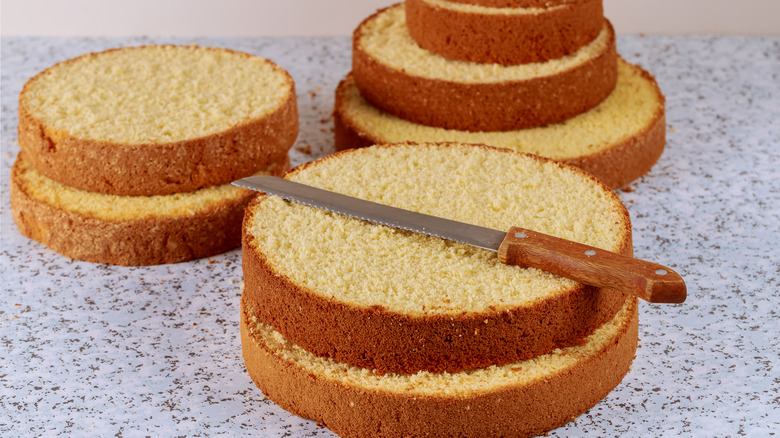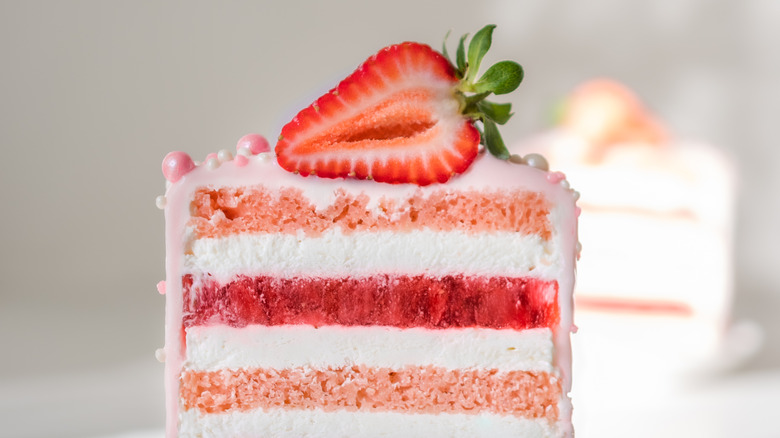What Is 'Torting' A Cake And Why Should You Know How To Do It?
The sight of cutting into a towering cake and finding the near-endless layers that help it stand so tall can spark delight in any passionate baker or diner. It's the essential element to showstoppers on The Great British Bake Off and recipes like the Smith Island 10-layer cake.
Making these countless layers can be a tedious chore, baking each layer one at a time with care; or you can just learn how to "torte" a cake. Torting a cake is the process of taking a larger cake and dividing it into smaller, thinner layers. It's the easiest way to produce multiple layers, but it does take a bit of skill to accomplish it without the cake falling apart.
Even if you think a two- or three-layer cake will suffice, knowing how to torte a cake can also help a domed cake and make simpler bakes become more level and consistent. Torting a cake is absolutely one of the best baking hacks that you'll wish you knew about sooner.
How to tort a cake
Torting a cake is fairly simple. Make sure that your cakes have cooled completely on a wire rack. This will help them to hold their shape better as you cut. Next, take a serrated bread knife and make a very slight cut around the outer edges of the cake. This line will help you to keep your cuts level. If you want a little more assistance, you can also mark it out with toothpicks to help keep your cuts accurate.
There are then two ways to make the final cut on your cake layer. One involves the knife that we started with, and the other involves dental floss. Yes, you can use dental floss to level or cut a cake. Just be sure to get one that isn't waxed, scented, or flavored in any way.
To use the knife, press down lightly on the cake with your other hand to keep the cake in place while carefully sawing, not pushing, through that guideline that you marked off earlier. It can help to start with thicker layers until you get used to the technique, and then move on to thin layers.
To use the floss, you'll follow that same line, but you'll wrap a segment of floss around the entire circumference of the cake instead. The floss needs to cross over at one point, and you'll then pull it to tighten that circle in on itself so that the floss is cutting inwards.
The royal lineage of tortes
The word "torting" is used to describe this process because the number of layers is one of the defining differences between a cake and a classic torte. While most tortes look flatter and denser than typical cakes, this is because of their ingredients that keep the cake from rising as high. They are usually divided into a minimum of four layers to then make up for these dense sections of cake. Most cakes have about three layers, but their lighter and more tactile ingredients help them stand taller.
"Torte" is German for cake, but the idea of a torte as its own type of cake supposedly comes from the Austrian Sacher-Torte. The Sacher-Torte was invented in 1823 by apprentice pastry chef Franz Sacher. He was tasked unexpectedly with creating a dessert for the Austrian State Chancellor and created the torte with chocolate and apricot jam to much acclaim.
There are now endless varieties of tortes, but nearly all of them are known for their elegantly cut layers.


